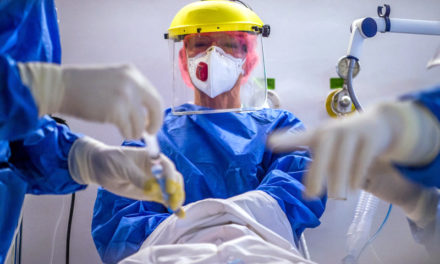The President of the Magyar Nemzeti Bank's letter was published in Magyar Nemzet. Here are some thoughts from this.
The goal of creating one million new jobs was at the center of the winning domestic economic program in 2010. At that time, we set this goal based on the employment level of the Czech economy, which was almost 1.2 million people higher.
However, the Czech economic model also provides us with additional lessons, so it is worth continuing the comparison of the Czech and Hungarian situation. We have three aspects:
- Where are the advantages of the Czech model and how could we introduce our disadvantages?
- Where are there advantages in the Hungarian model compared to the Czech model where we could even increase the advantage?
- Where are the opportunities for the future that are taking shape now, where the Hungarian model can be faster and more effective than the Czech one?
The most important advantages of the "heritage" are:
1. Before the Second World War, the share of industry in the Czech economy was one and a half times that of the Hungarian one. In addition to the 53 percent Czech and 36 percent domestic share of industry, the Czech economy was characterized by a significantly smaller share of agriculture, where the Hungarian share was 37 percent and the Czech share was 23 percent. This was a good basis for the later Czech industrialization programs, because there was something to build on instead of the experiment of the country of iron and steel.
2. Between the two world wars, Czechoslovakia avoided serious macroeconomic
imbalances. This helped to maintain a high level of development, because the typical "balance or growth" cycles did not start, which entailed a significant growth sacrifice.
3. Czechoslovakia avoided hyperinflation.
Thus, the external debt remained low, the ratio of industrial exports was high, and before the Second World War the Czech economy reached 91 percent of Austria's level of development. In our country, hyperinflation started a reverse story.
4. System change was verbally implemented with shock therapy, in practice with a gradual transition. We followed the opposite strategy, we talked about a gradual transition, but in the first half of the 1990s, Hungarian economic policy was based on shock therapy. Czech employment thus lost 400,000, and Hungarian 1.2 million jobs during the market transition. The Hungarian shock therapy is a huge mistake because it happened during the European recession of 1989-1992, which devalued the Hungarian national wealth several times.
5. In the hundred years after 1920, the Czech Republic was the most competitive country in the East-Central European region.
6. In terms of per capita development, the Czech Republic today reaches 94.1 percent of the EU-27 average, and we reach 74 percent.
The relative development of the Czech Republic in 2000 was similar to today's Hungarian development. In the last twenty years, however, they managed to break out of the medium development, which did not work as a trap for them, so last year they already surpassed Italy in terms of development.
7. The Czech economy is continuously characterized by a high investment rate and efficient capital accumulation.
Within investments, the use of intangible assets in the Czech economy is the largest in the region. This indicates that investments are typically made not in "iron and concrete" but in "brains and institutions". 8. The domestic added value of the manufacturing industry is higher than the Hungarian one.
In our time, the processing industry producing for export is at the center of examples of catching up. In this regard, the Czechs have a higher share of domestic ownership and a lower import content compared to the Hungarian economy.
9. The proportion of Czech added value in total exports is higher than in our country.
While the Czech export is 62.3 percent, the Hungarian one contains 55.9 percent added value.
10. Innovation costs are higher than in Hungary and the digitization of companies is significantly higher.
The digitization of Czech companies ranks 8th in the EU, Hungary is only in 25th place. This means higher productivity, more income, and therefore more investment resources in the business sector.
11. In the past thirty years, the labor market has shown smaller cycles than the Hungarian one. In 2019, the Czech employment rate was the fourth highest among the 27 member states of the EU and stands at 75.1 percent in the age group between 15 and 64, compared to the Hungarian level of 70.1 percent.
12. The territorial structure of the Czech Republic is more balanced than ours.
The three largest cities outside the capital represent almost twice as much weight in the Czech GDP as the three largest cities outside Budapest in Hungary. This means a healthier, spreading economic spatial structure.
13. After 1990, they managed to catch up without external imbalances and indebtedness. The decisive reason for this is that the Czechs mostly relied on internal financial resources. This is how they achieved that their net external debt has been negative for several decades.
14. The vulnerability of the Czech economy is low. In the region, the Czech economy has the most favorable debt rating from the credit rating agency, which is reflected in the lower price of financial resources.
15. The Czech budget policy was strongly countercyclical.
The Czech budget was in surplus on average over the five years between 2015 and 2019. These inherited advantages stem from the more predictable, gradual operation of the Czech model, which preserves previous values and avoids shocks.
But here comes the interesting thing!
In the last thirty years - mainly as a result of the positive developments after 2010 - the Hungarian model, which shows large cycles and operates with huge losses, rose from 51 percent of the EU average in 1990 to 74 percent. Meanwhile, the Czech model advanced from 81 percent of the EU average to 94.1 percent. In the last three decades, we approached the EU-27 average by 23 percent and the Czechs by 13 percent (meanwhile, the Poles by 34 percent).
the full article here.












